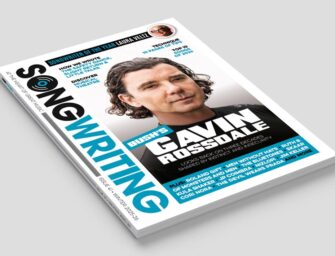
Julie Fowlis: “Pacing is everything – and musical pace takes on a different meaning when you are working within the spa world.”
Dream of composing music for spa experiences? Follow a multi-award-winning singer’s top strategies for creating transformative, journey-based soundtracks with purpose
On 27th September 2024, LUSH releases Highlands, an album that immerses listeners in the Scottish Highlands and blends traditional folk music with cinematic soundscapes. As heard on the single Cailleach Beinn a’ Bhric, the record features Julie Fowlis, a multi-award-winning singer from the Outer Hebrides. Fowlis, known for her work on Disney Pixar’s Brave, brings her deep connection to the Highlands, where she is now based, into the project. The album, developed with Lush Spa therapists, also merges music and massage to create a unique experience. Pressed on eco-vinyl, it includes bonus content and unique artwork celebrating Scotland’s rich culture.
| Before Fowlis reveals her tips on writing for wellbeing treatments, Luise Wiehmann, Lush’s Music Category Lead, shares some information on how other songwriters can follow a similar path to create new opportunities for themselves… “A lot of the time the client or brand will find you and your music, mostly via the usual streaming platforms, where they might be looking for a very specific sound or come across your music there, which then in turn sparks an idea for a collaboration. “If you are just starting out, your main focus will be on finding your own style, what you are passionate about and what is unique to you that you could bring into your songs. Think about who you are as an artist, rather than what the listener or client might want. Next it’s about making sure you’ll release music regularly to help increase your visibility and build an enticing portfolio. “In the case of the soundtrack for the Highlands Spa treatment, members of the team were already fans and followers of Julie’s songs and varied work, so when this project came about we knew quite quickly that we wanted to work together on the music, as Julie’s style and songs, as well as who she is an artist were the perfect match for what we had in mind for the sound and intention behind the soundtrack. “Alternatively, if you have an idea or would like to be proactive about putting your work on a brand’s radar then have the courage to reach out. Make sure you really do your research on what type of projects and collaboration the brand has done before and think about how your music would fit in, or in what capacity you might like to collaborate with the brand, and create a compelling pitch. Make sure to include links to specific songs of yours that emphasise and really speak for your pitch. I’m certain any brand would always be open to hearing innovative ideas.” |
Now it’s over to Fowlis to share her five key recommendations on how to write the best possible songs for spas and other wellbeing treatments…
1. WHAT IS THE GOAL OF THE TREATMENT?
Where are the music and lyrics transporting the client to? Think on the lyrical – but also the subliminal – messaging in your soundtrack, and what the treatment is trying to achieve. During the Highlands massage, I thought lots about, not just the songs themselves and the lyrics, but also the sounds and the delivery of the words – how they are sung, and what kind of response that might evoke from a client.
2. THE JOURNEY
Any spa treatment should have some sense of a journey. It is really important to consider dynamics within the treatment. Pacing is everything – and musical pace takes on a different meaning when you are working within the spa world. I loved being able to meander musically through the Highlands treatment – taking time over each section of the journey, like savouring chapters of a book. One of the real highlights was working with Jody [Bailey – spa therapist] on the rhythm and feel of the massage, and trying to create soundscapes to match her work at each step of the massage journey.
3. BRING YOUR TRUE SELF TO THE PROJECT BUT ALSO BE OPEN TO COLLABORATION
On the LUSH treatment, it was a pleasure working with such brilliant musicians; Ewen Henderson, Simon Richmond and, of course, my husband Éamon Doorley. Everyone was generous with ideas, and ready to both contribute and collaborate. It sounds like such a simple thing – but when you have musicians on board who are open and good-natured, it makes all the difference.
4. PUT THE CLIENT FIRST
This is where, musically, you have to be flexible and be ready to let go of potential control or preconceived ideas; you need to work as a team both within the studio with your fellow musicians, but also with your spa team who kept us on the right track, reminding us of the key journey points and outcomes we were collectively trying to achieve through the treatment.
5. MAPPING
If you would like to write music for spa treatments, I’d recommend that you think about the journey and outcome carefully, map it out – on paper, using musical notes, or electronically. Then start to compose around the journey, always thinking on the message or feeling that you want the client to receive through the process. Is it a deep sense of calm? Is it something which is more challenging? Is it place-based, transportive or otherworldly? Think of it as a musical map – and compose in a way that takes the client on that journey.


































Related Articles